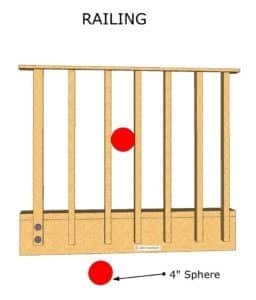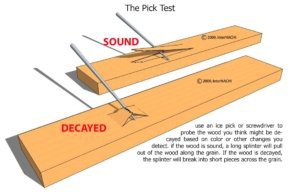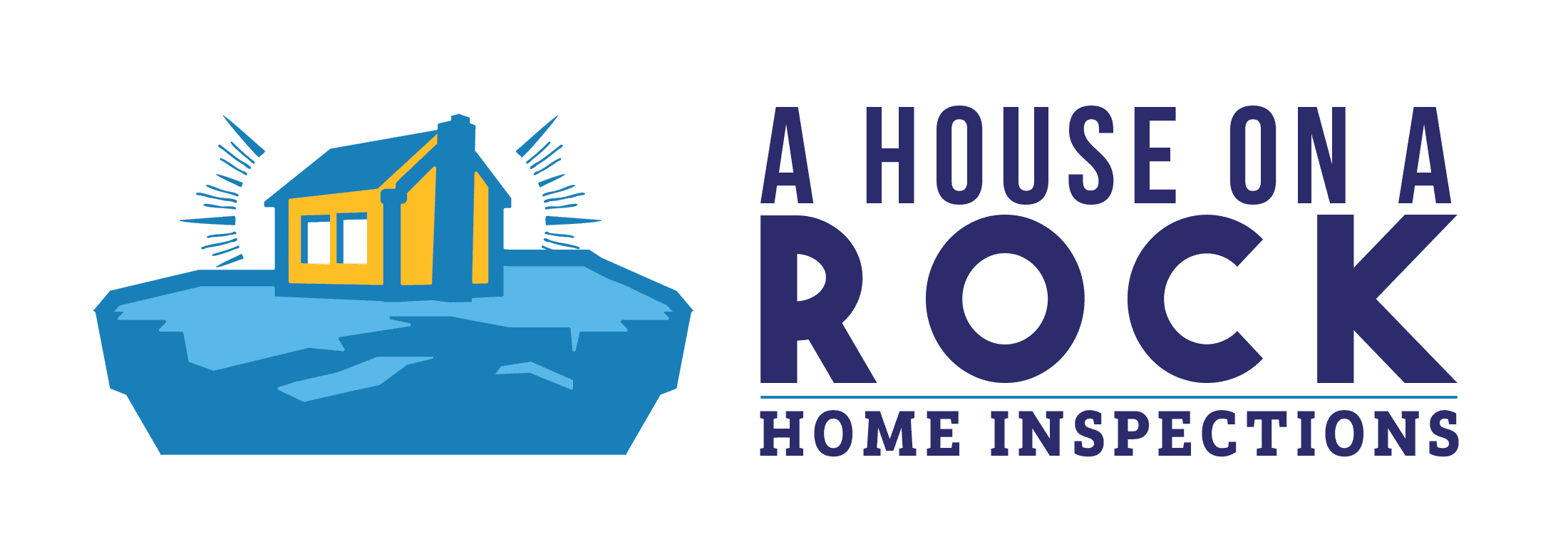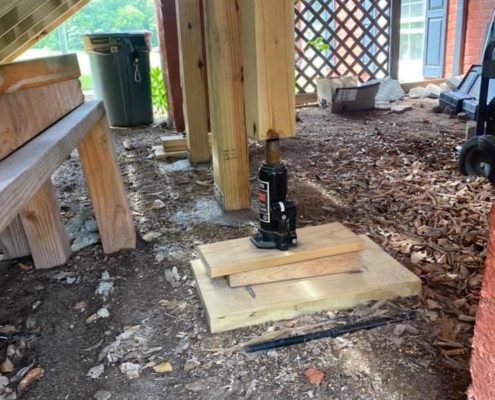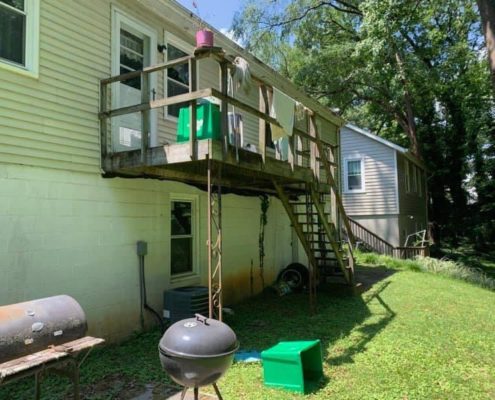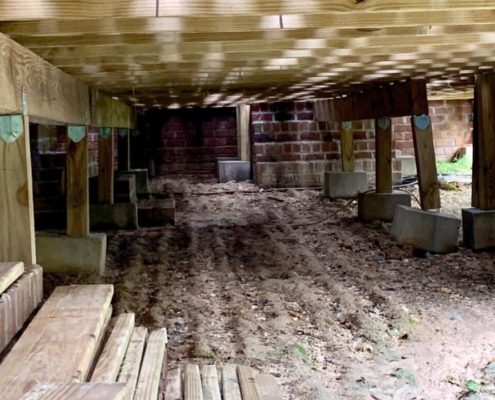May is Deck Safety Month
Tips for inspecting your deck
As an Amazon Associate I earn from qualifying purchases
May is deck safety month. The CPSC estimates that there are 20,000 deck injuries a year. Given the shear number of defects we encounter when inspecting decks here in Richmond, this number actually seems low. To “celebrate” Deck Safety Month, I thought I would give you some tips on how to inspect your own deck, and offer some guidance on how to make your deck safer. My obligatory legal disclaimer is that this is a blog. It is not all inclusive and does not take the place of hiring a professional to inspect and repair your deck 🙂
To kick off this celebration, lets start with some of the worst decks I have inspected over the years.
Start under the deck. The place where the deck usually fails is where the deck attaches to the house. You should see flashing, and bolts, or lag screws. It should look something like this.
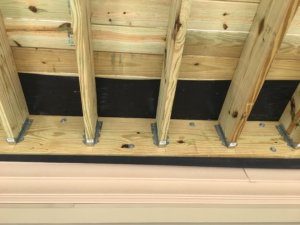
If you don’t see flashing that’s can cause big problems down the road. Missing flashing can cause rot to the band board and cause the deck to collapse. Installing the flashing is not a job for most home owners and you’ll want to hire a professional contractor.
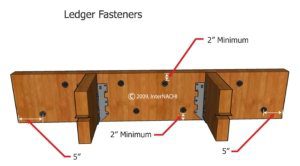
If you don’t see bolts, or lag screws, and see nails, or deck screws, that can also cause deck collapse. Nails and screws are not sufficient for this application. You also the need the correct spacing, and you don’t want to see significant rust. Luckily, this is pretty easy to address if you have a cordless drill. If you don’t, check out our blog 8 Must have Tools for New Home Owners. Fasten Master makes special, code approved, easy to install ledger attachment hardware. Just pick up a box (or two), and follow the spacing and installation requirements.
2. Dont stray your eyes too far. Next you need to check the joist hangers. Those are the metal brackets that attach the joists to the ledger board, or to the beam on the opposite side. Joist hangers should not be significantly rusted, should have a nail in every hole, and should not have deck screws in the holes. If you see any of these issues, or the joists are just supported by toe nails, you should address this. Here are some examples.
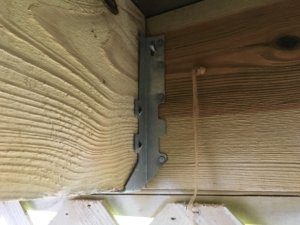
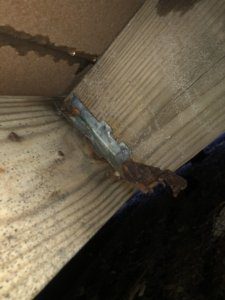
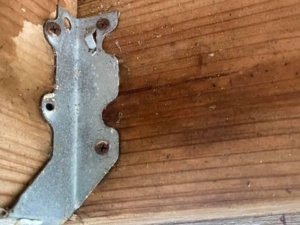
When replacing, or adding joist hangers, make sure you get the size for your joists. Also, make sure you use the correct type of nails, which we conveniently link to below.
3. Now give the joists and beams (The horizontal wood members under the deck) a general inspection. You should not see any bowing, cracks, rot, or damage. If you do, then it is definitely time to call in a professional contractor.
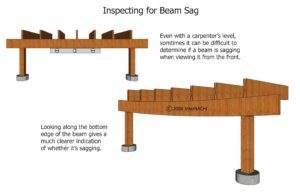
4. Move on over to the posts ( The vertical members) aka columns. They should not be rotted at the bottom. Additionally, there are very specific ways to connect to them to the beams. They can not be bolted, nailed, or screwed to the beams. The beams need to be bearing on them in some fashion. If not, there are retrofit brackets you add. Here’s a few examples, and of course some links to the proper brackets.
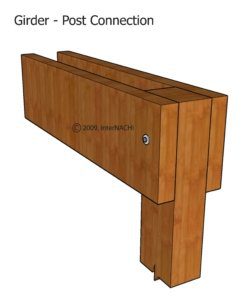
This is an improper beam to post connection
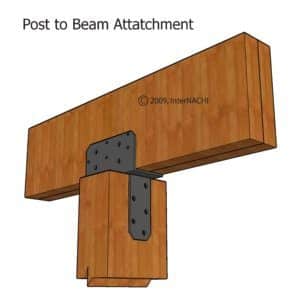
this isa proper post to beam attachment
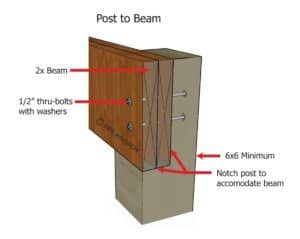
this is a proper beam to post connection
The methods above can be done during the initial construction of the deck. If you do not have proper beam to post connections, here are some retrofit options. Sometimes though, the connection is so poor there is corrective measure other than rebuilding.
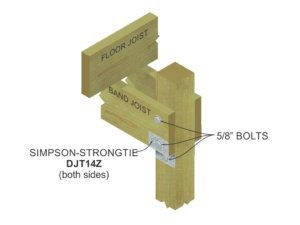
retrofit joist to post connection
5. Let’s start making our way up the deck. This is a little simpler. Starting from the steps, grab the hand rails and make sure they are sturdy. Make sure the balusters are not spaced more than 4″ apart on the deck, and 4 3/8″ on the stairs. This is so kids don’t get their heads stuck. Do this all the way ups the stairs, and all the way around the deck for the guardrails. If you don’t have guardrails and handrails, I think you know what to do. Look at the decking for rot and do a pick test if needed. Check for loose nails, and warping boards. Make sure the stain on the deck is in good shape to prevent any future issues with decking. Below are some images to help you with inspecting the top part of your deck.
